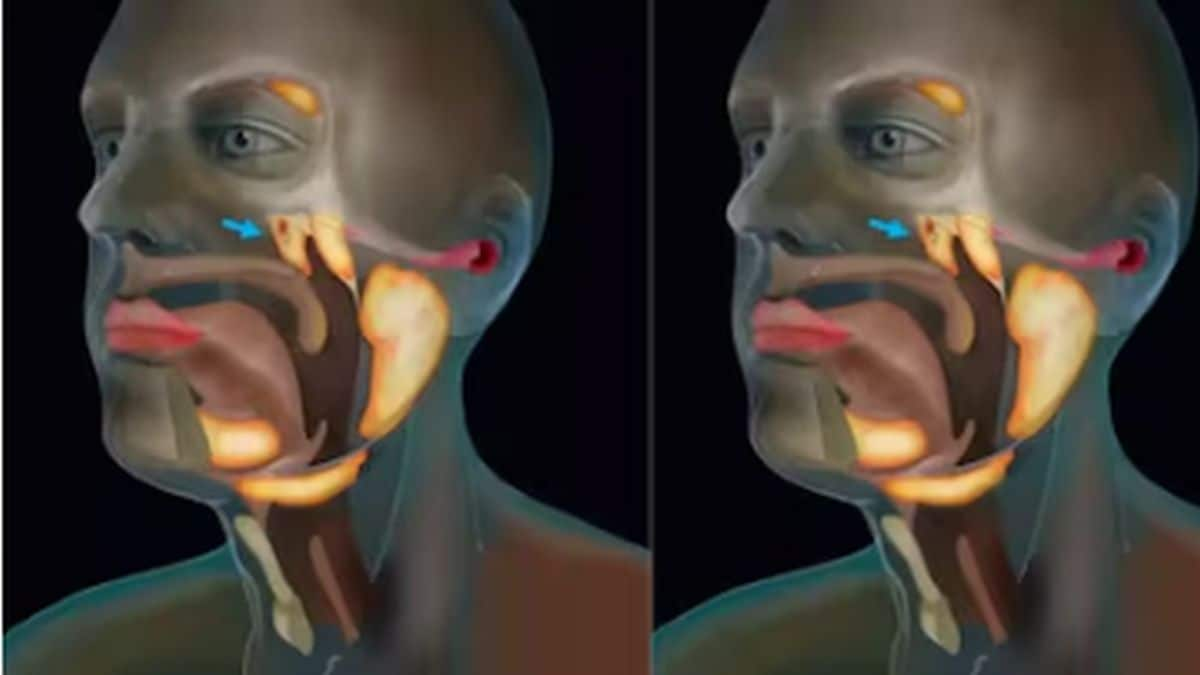From watermelon stomach to chocolate cysts, you might wonder why doctors decided to name some ailments after foods – after all, it’s enough to put you off your dinner.
When early physicians and surgeons were studying the body to understand normal function or disease, they lacked modern microscopic and molecular imaging and diagnostic techniques. Instead, they had to rely on basic observational skills and often used easily recognised descriptors to explain the appearance of organs and diseases.
How food became a way to represent the body’s appearance
Food, then, became a convenient way to communicate the appearance of the body – in health and in sickness. This practice is known as eponymophilia and it continues today, particularly in pathology – the study of disease.
There are lots of eponyms to describe the female reproductive system. Many healthcare workers describe healthy ovaries, for instance, as almond shape and size, while the shape of a typical uterus is often likened to an upside-down pear.
Different shapes can be down to normal anatomical variation but can also be a sign of disease. Knowing these shapes and sizes allows for rapid identification during imaging assessments or medical examinations.
Following childbirth and the cutting of the umbilical cord, the mother must deliver the afterbirth. According to 16th century anatomist, Matteo Realdo Colombo, the afterbirth looked like a “ flat-cake”, and so he named it “placenta”, which comes from the Latin word for a type of cake.
Doctors examine the placenta carefully post-delivery to make sure none is left inside the mother – a condition known as retained placenta – which happens in 0.1-3% of births. Retained placenta can cause post-partum haemorrhage and and even the death of the mother, so checking the placenta looks like a “flat-cake” can save lives.
Impact Shorts
More ShortsWhile some eponyms, like the flat-cake placenta, seem straightforward, others can seem rather unkind. Take the common descriptions of Cushing’s syndrome for instance.
People with Cushing’s often have a larger than average abdomen and lean legs, known as “lemon on matchstick” and can develop a “ moon face” and a “ buffalo hump”.
Cushing’s disease is caused by long-term exposure to high levels of cortisol, a hormone the body makes to regulate its response to stress. It can develop naturally from tumours forming in the adrenal or pituitary glands, which produce cortisol.
More commonly, however, it’s caused by some medicines, such as steroids – which contain a synthetic version of cortisol.
‘Milky leg syndrome’
Some eponyms can also function as euphemisms – making a serious, even threatening condition sound less worrying. Take “milky leg syndrome” or “ milk leg”, for instance – deep vein thrombosis (DVT) in the iliac veins in the pelvis or the femoral veins at the top of your legs.
The blockage prevents venous drainage – when veins drain deoxygenated blood and return it to the heart – from the legs, which causes painful, pale and swollen legs.
Research suggests that 75% of cases of milk leg occur in the left leg and men are more likely to develop the condition than women. There are a number of risk factors, including previous vein blockage, obesity and pregnancy.
If not treated promptly, the condition can progress to phlegmasia cerulea dolens – a rare but serious complication of DVT causing fluid build-up that prevents arteries from delivering blood into the tissues – which can lead to tissue death and venous gangrene. Sadly, once venous gangrene has set in, amputation and death are common outcomes.
While this all sounds grim, spare a thought for those who suffer from “hot potato voice”, which describes the sound of someone who has an obstruction somewhere in the upper part of their airway. This blockage prevents the person from forming sounds properly and can be caused by an abscess in or around the tonsils, or a stone lodged in the throat.
Before I go on, it’s only fair to warn you that if you’re eating or drinking or you haven’t got the stomach for more graphic descriptions, you might not want to read any further.
Salmonella
Pea soup diarrhoea is an apt description of a deeply unpleasant infection: salmonella. Salmonella – or food poisoning – is an infection with salmonella bacteria that causes diarrhoea, high temperature and stomach pains. It can be transmitted from person to person through contaminated food or water or from touching infected animals, their faeces, or their environment.
Thankfully, most healthy people recover fully by drinking plenty of fluids and resting. Younger or older people are at greater risk of more severe illness, as are immunocompromised people, and they may be prescribed antibiotics to help them recover from the infection.
While diarrhoea can look like pea-soup, some STIs can look like cauliflower. Yes, sexually transmitted warts caused by the human papilloma virus can have a “cauliflower-like appearance”.
They are typically seen on the external genitalia, around the anus and may be present internally too. Certain types of cancers, such as squamous cell carcinomas, also have a cauliflower-like appearance as they develop.
The thick, white odourless discharge that can be a symptom of thrush is often likened to cottage cheese.
The vagina usually self-cleans by producing a white or clear discharge. The white colour is most common at the beginning or end of the menstrual cycle; however, if the consistency becomes clumpy or curd-like, this is often a sign of infection.
Most commonly, it’s a yeast infection but could also be a sexually transmitted disease, such as chlamydia. If there is a problem, this discharge is usually associated with other symptoms such as discomfort, pain, itching or an unpleasant smell.
While some of these descriptions may seem unpleasant, they can be helpful to identify abnormalities and medical conditions. Food eponyms can help avoid confusion so doctors know what they’re looking for during examinations or surgery.
Adam Taylor, Professor of Anatomy, Lancaster University
This article is republished from The Conversation under a Creative Commons license. Read the original article.


)

)
)
)
)
)
)
)
)



